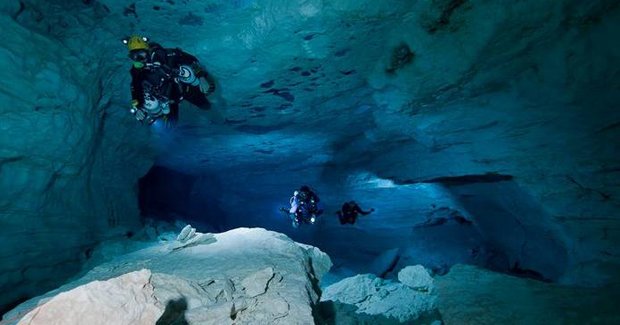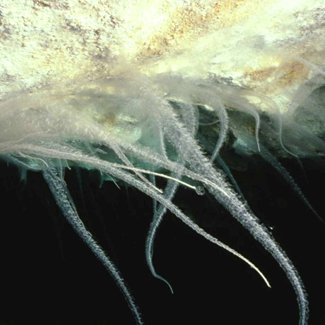Mystery slime found in Nullarbor cave system

STRANGE CURTAINS OF living slime have been discovered hanging in submerged caves beneath the Nullarbor Plain in southern Australia.
Scientists are trying to figure out how the slime – made up of a community of bacteria and tiny single-celled organisms called archaea – can survive deep underground, despite a lack of light and nutrients.
The slime also has an unusual ‘shimmering’ appearance, which experts believe is down to calcite crystals trapped within it.
Slime community is novel discovery
Ian Paulsen, part of the team studying the samples at Macquarie University in Sydney, says his driving motive is to find out how the slime community is making a living in such difficult conditions.
He suspects that a key group of microbes in the slime, which are related to those found in the sea and in fish tanks, are surviving on a diet of carbon dioxide and ammonia.
The caves in question are made almost entirely of limestone, which has created a unique environment for the organisms to grow in.
“The water is saturated with calcium from the limestone, and you get these microscopic calcium crystals that form in the slime,” says Ian. “If you’re a diver and you shine your flashlight on them, they light up like slimy little Christmas trees.”

The material is known as the Nullarbor cave slimes. (Credit: Peter Rogers)
Calcite crystals create underwater shimmer
Calcite crystals are often found in limestone caves, and make up structures such as stalactites and stalagmites.
“Cave divers commonly call them ‘snot rooms’,” says Steve Trewavas, who collected samples from the caves along with other members of the Cave Divers Association of Australia.
“The [slime has] a white or yellowish tinge and hang down in big tendrils.”
In an ongoing study, the group aims to find out whether the growth of the crystals is purely by chance, or if the bacteria play a role in their formation.
“We want to work out whether the bacteria is mediating them through some sort of process,” says Ian. “They could have potential nanotechnology applications if we could get them to grow in useful shapes.”
Underwater caves beneath Nullarbor
Weebubbie Cave, where the slime curtains were observed, is one of the largest known cave systems under the Nullarbor.
The water in which the microbes reproduce is much saltier than regular seawater, and crystal clear due to the lack of sediment.
Steve, who took photographs illustrating this story while collecting specimens, said the dazzling slimes were “extremely rare,” being limited to the few small caverns in the Nullarbor that could offer such a unique environment.
The findings are published in the Journal for the International Society of Microbial Ecology.
RELATED STORIES

